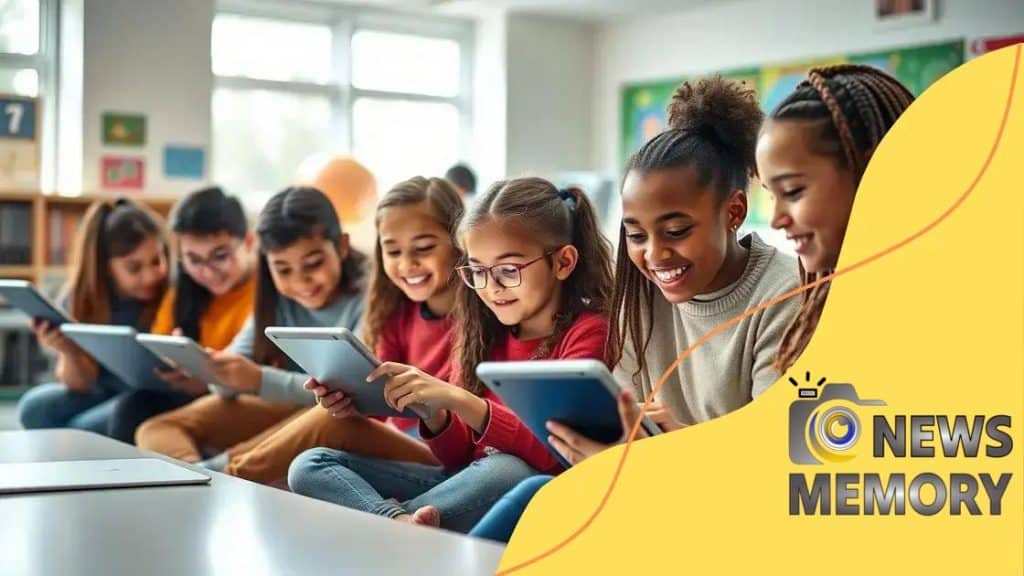How AI is personalizing education for students with disabilities

AI is personalizing education for students with disabilities by providing tailored learning experiences, immediate feedback, and supportive resources, making education more accessible and inclusive.
How AI is personalizing education for students with disabilities opens up new avenues for tailored learning experiences. Have you ever wondered how technology can bridge gaps in traditional education? Let’s dive into this intriguing topic.
Understanding AI in education
Understanding AI in education is essential in today’s tech-driven world. Artificial Intelligence (AI) is reshaping classrooms and learning environments. It offers personalized learning experiences that can directly address the unique needs of each student.
What is AI?
AI refers to the simulation of human intelligence in machines designed to think and act like humans. This technology can analyze data, make decisions, and improve outcomes based on inputs. In education, AI can adapt to individual learning styles and paces.
Key Benefits of AI in Education
- Personalized learning: Tailors lessons to fit each student’s strengths and weaknesses.
- Immediate feedback: Provides students with instant assessments, allowing faster adjustments in their learning.
- Automation: Reduces administrative tasks for teachers, allowing them to focus more on instruction.
- Inclusivity: Offers tools for students with disabilities, ensuring all learners can succeed.
AI also equips teachers with valuable insights about student performance. By analyzing data, educators can identify trends and make informed decisions to support their students. Imagine a classroom where every child receives instruction suited to their unique abilities!
Furthermore, AI tools can assist students with disabilities. For example, speech recognition software helps those with writing difficulties. Visual aids can benefit students who struggle with traditional reading materials. These tools can create an inclusive classroom that acknowledges each student’s potential.
In conclusion, as we explore AI in education, it’s clear that this technology holds powerful tools for enhancing learning experiences. Understanding its capabilities is the first step toward transforming education for all.
Benefits for students with disabilities
The benefits for students with disabilities when using AI in education are profound and transformative. By leveraging technology, we can create a more inclusive environment that addresses the individual needs of every learner.
Enhanced Learning Experiences
AI tools provide personalized learning experiences tailored to each student’s strengths and challenges. This customization helps students grasp concepts more effectively and boosts their confidence.
Supportive Resources
- Speech recognition: Helps students with writing difficulties by converting their spoken words into written text.
- Visual aids: Offers tools for students with visual impairments, allowing them to access course material easily.
- Interactive software: Engages students through gamified lessons, making learning enjoyable and accessible.
- Behavioral insights: Analyzes patterns in student behavior, enabling teachers to provide targeted support.
Furthermore, AI assists teachers in identifying what methods work best for their students. By analyzing data trends, educators can adapt their strategies to meet the evolving needs of their classes. This flexibility is especially important in a diverse classroom where each student’s needs vary significantly.
AI not only levels the playing field but also prepares students for future challenges. With technology becoming increasingly important in today’s world, equipping students with the right tools is vital for their growth.
Real-life success stories

Real-life success stories demonstrate the powerful impact of AI in education for students with disabilities. These examples show how technology can transform learning and help students reach their full potential.
Case Study: Sarah’s Journey
At a local high school, Sarah, a student with dyslexia, struggled with reading assignments. After her school implemented an AI-powered reading software, Sarah began to thrive. The software read text aloud and provided visual aids. This personalized approach boosted her confidence and improved her grades.
Another Inspiring Example
In a different district, a boy named Marcus, who is non-verbal, benefited greatly from AI. He used an augmentative and alternative communication (AAC) device powered by AI. This technology allowed him to communicate his thoughts effectively for the first time. His teachers and peers were amazed at his progress.
Key Outcomes of AI Implementation
- Higher engagement: Students show more interest in learning with AI tools.
- Improved academic performance: Many students demonstrate significant gains in their studies.
- Increased independence: With the right tools, students gain autonomy over their learning process.
- Stronger social skills: Using technology enhances interactions with peers and teachers.
These success stories illustrate that with the right educational tools, every student can excel. Implementing AI not only changes individual lives but also enriches learning environments for everyone involved.
Challenges in implementing AI
Implementing AI in education presents several challenges. While the benefits are clear, schools must navigate various hurdles to effectively use this technology.
Cost and Resources
One significant challenge is the cost of implementing AI tools. Schools often face tight budgets, making it hard to invest in necessary technology. Additionally, securing adequate resources, such as training for teachers and support staff, can be a daunting task.
Technical Issues
Another obstacle involves technical difficulties. Integrating new AI systems with existing infrastructure can be complex. Schools need reliable internet access and up-to-date hardware to ensure smooth operation. Without a solid technical foundation, AI tools may not function as intended.
Resistance to Change
- Teacher training: Many educators feel uncomfortable with new technology and require training to use AI effectively.
- Parental concerns: Some parents may be skeptical about AI and its impact on traditional learning.
- Student data privacy: Protecting students’ personal information is a significant concern that schools must address.
- Adoption rates: Ensuring all educators are on board with AI initiatives can take time.
Moreover, resistance to change can hinder the adoption of AI tools. Teachers, students, and parents may have varying views about technology in the classroom. It takes consistent communication and support to get everyone excited about the possibilities of AI.
Finding solutions to these challenges is crucial for schools to leverage the full potential of AI. By addressing financial, technical, and social barriers, educational institutions can provide better learning opportunities for their students.
Future trends in AI and education
Future trends in AI and education are expected to evolve quickly, reshaping how students learn and how teachers instruct. As technology advances, we can anticipate exciting changes that enhance the educational experience.
Personalized Learning Experiences
AI will continue to offer more personalized learning environments. Future AI systems will analyze data on individual learning styles, preferences, and progress. This approach will allow educators to create tailored lesson plans that adapt in real-time to student needs.
Increased Use of Virtual Reality
As AI technology develops, we may see an increase in the use of virtual reality (VR) in classrooms. VR can transport students to different environments, making learning more immersive. Imagine teaching history by taking students on a virtual tour of ancient civilizations!
Greater Accessibility
- Assistive technology: AI advancements will lead to more reliable assistive tools for students with disabilities.
- Multilingual learning: AI can help break down language barriers, allowing students from different backgrounds to learn together.
- Real-time feedback: Enhanced tools will provide instant assessments and tutorials to support learning as it happens.
- Community collaboration: AI could facilitate better communication among students, teachers, and parents.
Additionally, teacher roles will likely change as AI takes on more administrative tasks. Educators can then focus on building relationships with students and guiding their learning journeys. This shift is crucial in creating a supportive learning environment.
Institutions will also need to prioritize training to help teachers effectively integrate AI technology in their classrooms. Professional development will ensure educators feel confident in using these new tools, leading to more successful outcomes for students.
FAQ – Frequently Asked Questions about AI in Education
How does AI personalize learning for students with disabilities?
AI analyzes each student’s needs and adapts lessons to their learning style, making education more accessible.
What are some tools used for AI in education?
Common tools include adaptive learning platforms, speech recognition software, and virtual reality applications.
What challenges do schools face when implementing AI?
Schools often encounter issues like budget constraints, technical integration, and resistance to change from staff and parents.
How can teachers be trained to use AI effectively?
Professional development programs and workshops can provide teachers with the skills and confidence needed to integrate AI into their classrooms.





